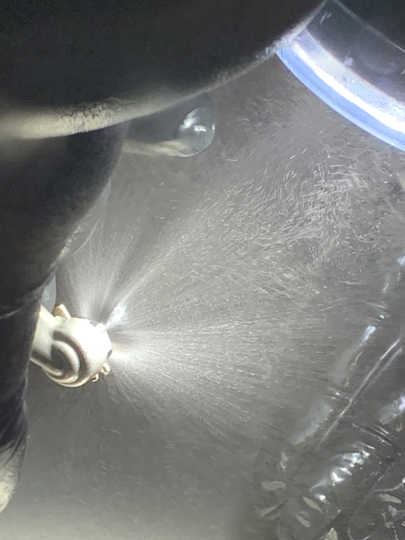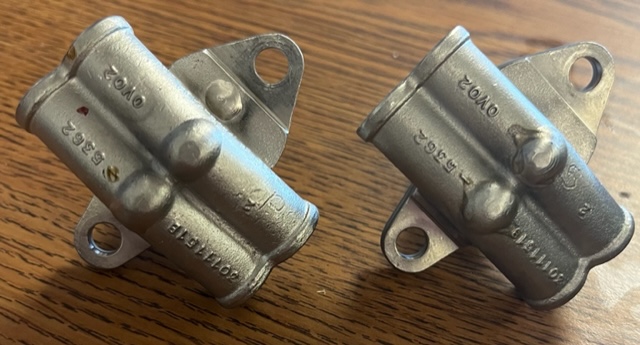I was speaking with a customer, and we were discussing how much cheaper it is to do preventative and scheduled maintenance than wait until there is an issue. With a bit of planning and preparation, the care of your engine can be far less “painful.” It is easier to spend a little at a time taking care of potential items that can damage your engine, as opposed to ignoring them and getting hit with a hefty bill later. One preventative/scheduled maintenance item that everyone will need to look at is fuel nozzles and their care.
I have been asked many times how often should I have the fuel nozzles looked at? The Pratt & Whitney Canada maintenance manuals provide some guidance, but the answer to this question is ultimately up to the owner/operator of the engine. The Periodic Inspection table in the maintenance manual states that fuel nozzle maintenance is based upon the operator’s experience and rejection rate. For operators new to PT6A operation or if fuel quality is an unknown, the manual says to do the preliminary inspection of the fuel nozzles at 200 hours. Then based on the results, you can extend your time out to as much as 400 hours. As you can see, the actual schedule of your maintenance is primarily up to the operator; however, it must be completed between 200 and 400 hours. Many customers I work with prefer to perform their fuel nozzle maintenance in conjunction with their 300-hour airframe inspection.
When it comes time to remove your fuel nozzles, you will want to identify them. Most engines have a mix of what we recognize as primary and secondary fuel nozzles. Some engines have duplex fuel nozzles, which means each of the 14 nozzles has a primary and secondary side. The primary fuel is delivered during the initial start sequence, followed by the secondary fuel. This process allows for cooler starting temperatures. Each of these nozzles must go into the correct location as identified in the engine maintenance manual to ensure the proper starting fuel sequence. The primary nozzle has a spot weld on the mounting flange near the bolt hole, and the secondary nozzle has no spot weld. Examples of the two fuel nozzles are shown in the accompanying picture. Before removal, you can number the fuel nozzles 1 through 14 to return them to the correct location after processing. As we have discussed, we always look at the engine from the pilot’s perspective. Fuel nozzle numbering happens the same way. We number the nozzle on the top of the engine as number 1, then number to the right, going down and around the engine. The easy way I remember this is that one is at the top, and then you count towards where the ITT connects. Remember, you don’t want to touch the nozzle tips with your bare fingers. Wear gloves and put each nozzle assembly and sheath into a container or plastic bag. This will keep your nozzles safe and organized.

What does fuel nozzle maintenance mean? Initially, a leak check and function test of each fuel nozzle manifold adapter are to be performed. At Covington Aircraft, we handle many exchange/mail-in fuel nozzle sets. Our initial process on all of them is to perform the function check and note any issues we reveal. We are looking for nozzles that might have voids, streaks, or an abnormal spray pattern. If something extreme is observed, we advise the customer of the results and discuss with them the results of their borescope inspection. Next, we process the nozzles and sheaths through approved cleaners. Don’t use unapproved cleaning methods.
One can cause damage, and damage means dollars. Post cleaning, we perform another function test and a leak check. We also inspect the cleaned sheaths for wear and fit. During the final function check, we want to ensure the spray pattern of each nozzle is correct. We also watch each tip cut off to ensure it is functioning correctly. The cleaning and inspection processes take time. I know time is the most limited thing any of us have during the heat of the season. One option to reduce downtime is to use exchange kits. These kits usually contain all the seals and gaskets that you need. You need to ensure that you have the correct (primary and secondary) fuel nozzles when installing them. Typically, you can order these exchange kits in advance and then install them while you remove your current nozzles. Exchange kits keep downtime to a minimum.

If parts issues are found during the inspections, don’t ignore them. Replacement of the parts is easy, and the cost of ignoring them can be catastrophic. The maintenance manual describes burn-through on a vane ring, and that burn-through can reject your set of compressor turbine blades. This past week, I became aware of 3 situations where the fuel nozzles are suspected of causing major damage to the engine.
The maintenance manual also instructs to perform a borescope inspection with each fuel nozzle maintenance event. Once the nozzles are returned to you, or you have your exchange set, you are ready to reinstall them. Use engine oil for the packings on your transfer tubes. DON’T use grease. If a product like DC-4 is used, there is potential that it can “clog” the transfer tube. Make sure to reference your maintenance manual for proper procedures and location of primary and secondary nozzles (as needed). The last step we take before starting the engine is to prime the fuel line to the fuel nozzles. Believe it or not, we have seen starting problems on a PT6 caused by air in the fuel line. We disconnect the fuel line to the #8 (bottom) nozzle and connect a hose. Then motor the engine with the fuel on until you get a solid stream. This also allows you to pull the fuel lever back to ensure it cuts off. Follow the guidance of the starter when doing the motoring runs, as you don’t want to overheat it. You are ready to get back to work when everything is back together and secured. Remember spending a little now can save a lot later.
Robert Craymer has worked on PT6A engine and PT6A powered aircraft for the past three decades, including the last 25+ years at Covington Aircraft. As a licensed A&P mechanic, Robert has held every job in an engine overhaul shop and been an instructor of PT6A Maintenance and Familiarization courses for pilots and mechanics. Robert can be reached at robertc@covingtonaircraft.com or 662-910-9899. Visit us at covingtonaircraft.com. Fuel Nozzles





